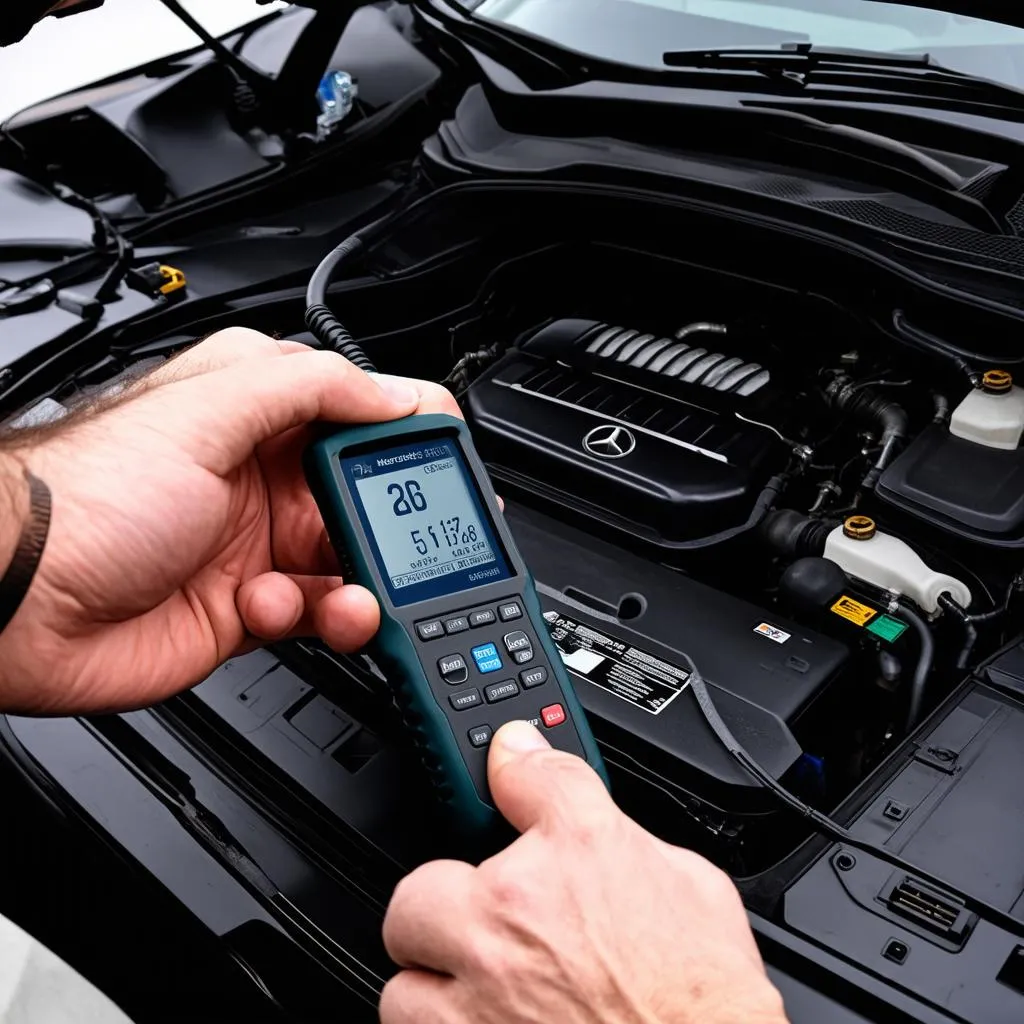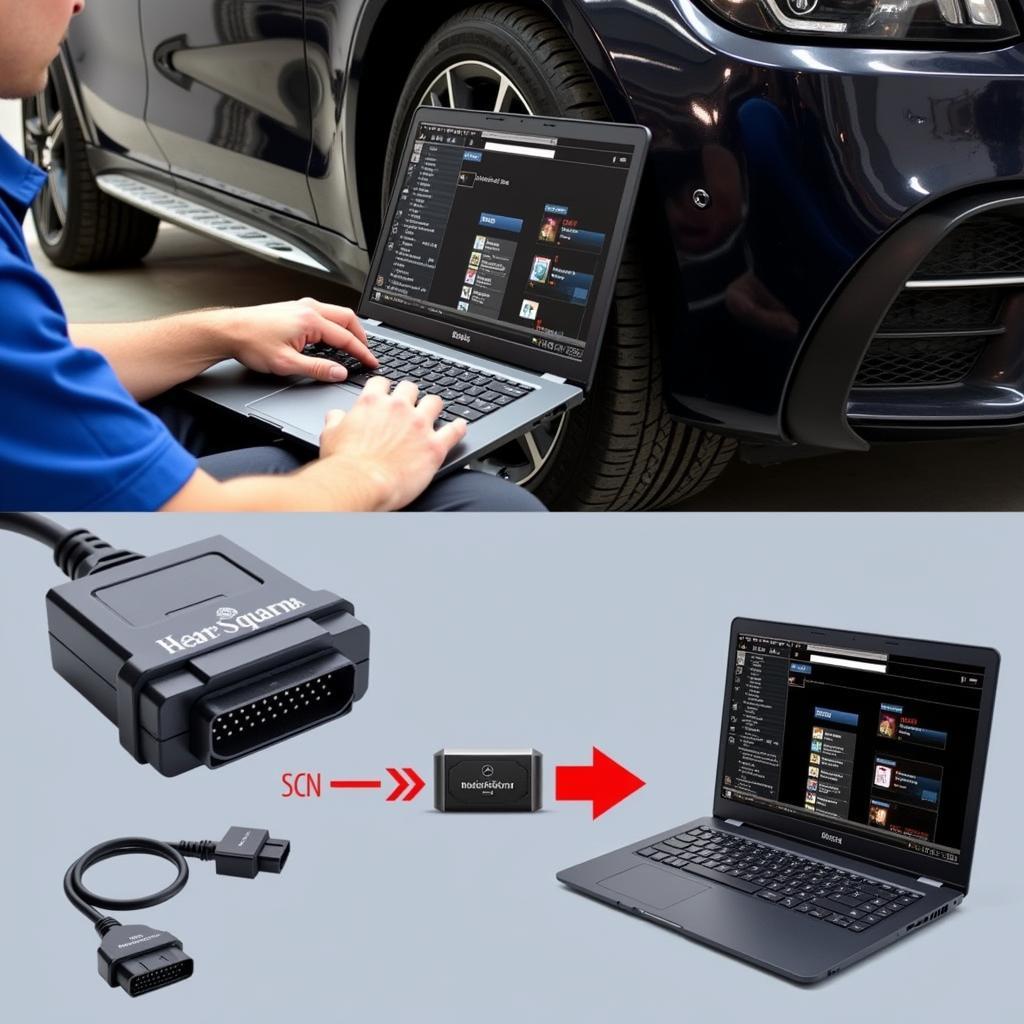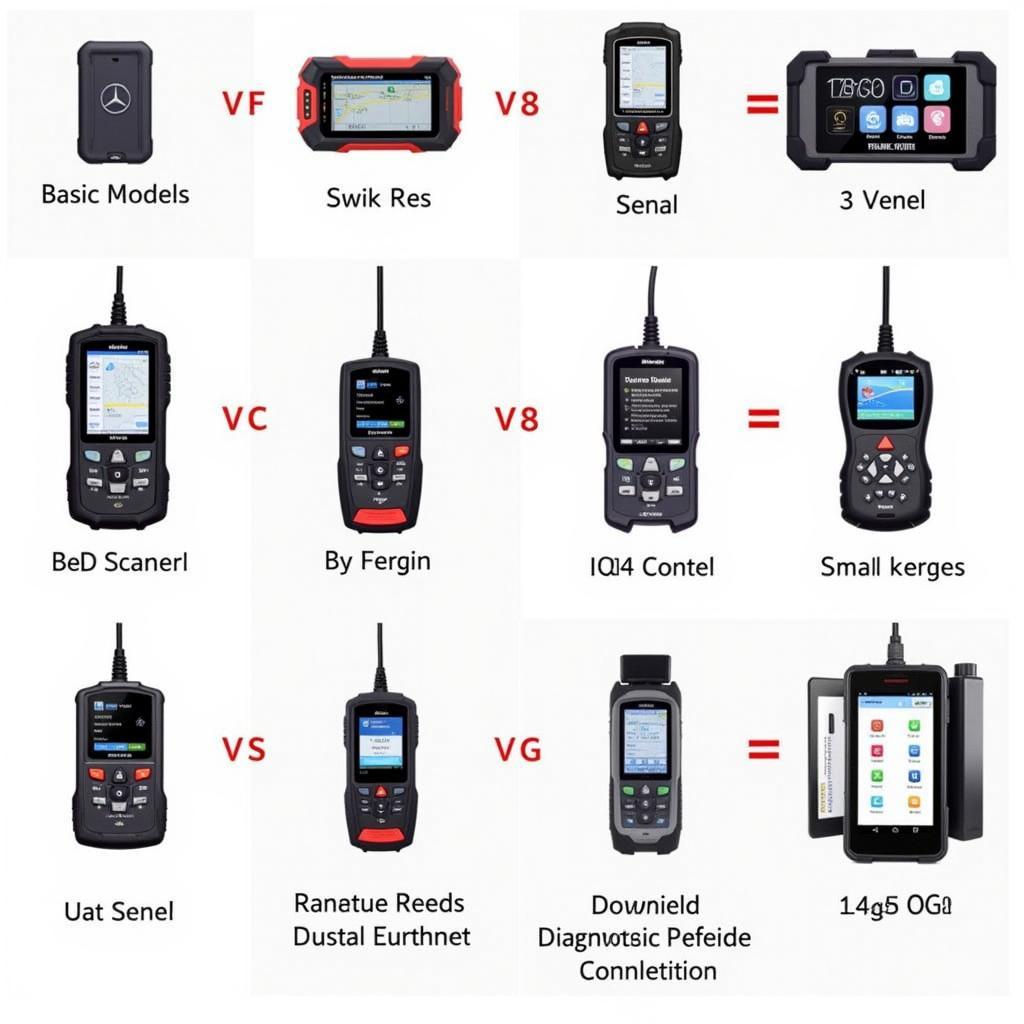Mercedes-Benz vehicles are renowned for their sophisticated engineering and cutting-edge technology. At the heart of this technological prowess lies a complex network of electronic control units (ECUs) that monitor and regulate various vehicle systems. When a malfunction occurs, these ECUs generate diagnostic trouble codes (DTCs), commonly known as Mercedes diagnostic codes.
This article serves as a comprehensive guide to understanding these codes, their significance, and how they help diagnose and resolve issues in your Mercedes.
Decoding the Language of Your Mercedes
Mercedes diagnostic codes, like those found in other vehicle makes, are standardized by the Society of Automotive Engineers (SAE) using the OBD-II (On-Board Diagnostics) protocol. However, Mercedes also employs its own proprietary codes for more in-depth diagnostics.
These codes typically consist of five characters:
- A letter: Indicating the system where the fault originates (e.g., “P” for Powertrain, “B” for Body, “C” for Chassis).
- A number: Specifying the type of fault (e.g., “0” for generic OBD-II codes, “1” for manufacturer-specific codes).
- Another number: Pinpointing the specific control module associated with the fault.
- Two final digits: Identifying the actual fault within the system.
For instance, a code “P0171” signifies a powertrain-related issue (P), a manufacturer-specific code (01), related to the fuel or air metering system (71).
The Importance of Accurate Diagnosis
Accurate interpretation of Mercedes diagnostic codes is crucial for effective vehicle repair. Misinterpreting these codes can lead to unnecessary repairs, wasted time, and increased expenses.
“Using the wrong diagnostic approach is like trying to solve a puzzle with the wrong pieces,” says automotive electronics expert, Dr. Emily Carter, author of “Automotive Electronics Demystified.” “Accurate code interpretation is the foundation of efficient and effective vehicle repair.”
Tools for Retrieving and Interpreting Codes
Retrieving Mercedes diagnostic codes requires a compatible OBD-II scanner or a more advanced Mercedes-specific diagnostic tool. These tools connect to your vehicle’s OBD-II port and allow you to read and clear codes, view live data streams, and perform various diagnostic tests.
Cardiagtech offers a range of diagnostic tools tailored for Mercedes-Benz vehicles, empowering both DIY enthusiasts and professional mechanics to diagnose and resolve issues efficiently.
 Mercedes Diagnostic Tool
Mercedes Diagnostic Tool
Common Mercedes Diagnostic Codes and Their Meanings
While the specific codes and their interpretations can vary depending on the model and year of your Mercedes, some common ones include:
Engine and Emissions:
- P0171: System Too Lean (Bank 1)
- P0174: System Too Lean (Bank 2)
- P0300: Random/Multiple Cylinder Misfire Detected
- P0420: Catalyst System Efficiency Below Threshold (Bank 1)
Transmission:
- P0700: Transmission Control System Malfunction
- P0720: Output Speed Sensor Circuit Malfunction
- P0730: Incorrect Gear Ratio
Body and Chassis:
- B1000: Control Module Internal Fault
- U0100: Lost Communication with ECM/PCM
What Should You Do When Your Mercedes Displays a Warning Light?
When your Mercedes displays a warning light, it’s essential to take the following steps:
- Consult Your Owner’s Manual: Your owner’s manual provides guidance on warning light meanings and recommended actions.
- Retrieve Diagnostic Codes: Use an OBD-II scanner or a Mercedes-specific diagnostic tool to identify the specific fault codes triggering the warning light.
- Research the Codes: Consult online resources, forums, or repair manuals to understand the meaning and potential causes of the retrieved codes.
- Address the Issue: Depending on the complexity of the issue, you may choose to address it yourself or seek professional assistance.
Preventative Maintenance and Regular Diagnostics
Regular maintenance and periodic diagnostic checks are crucial for preventing issues and ensuring the longevity of your Mercedes.
 Mercedes Engine Maintenance
Mercedes Engine Maintenance
Conclusion
Understanding Mercedes diagnostic codes is essential for effective vehicle maintenance and repair. By familiarizing yourself with these codes and utilizing the right diagnostic tools, you can ensure your Mercedes continues to deliver the performance and reliability it’s known for. For further assistance and access to top-tier diagnostic tools, explore the range of products and resources available at CARDIAGTECH.


